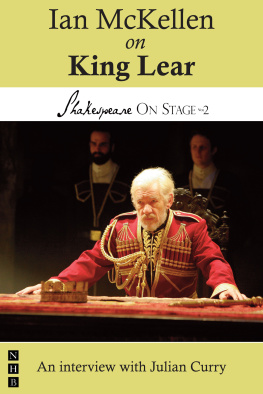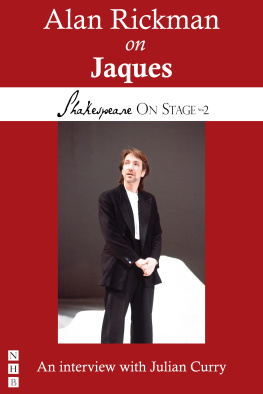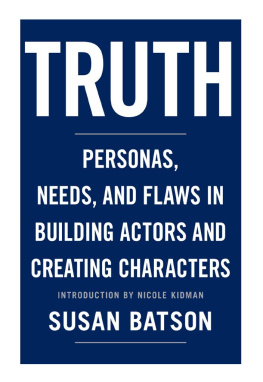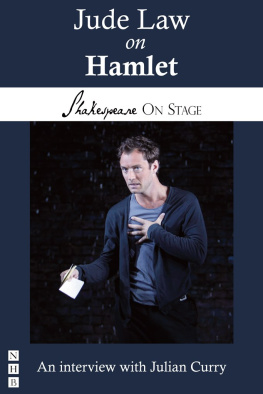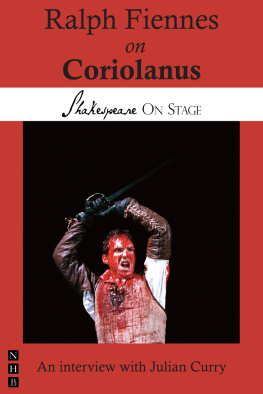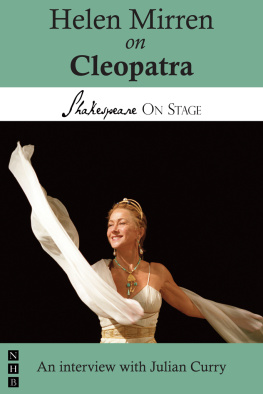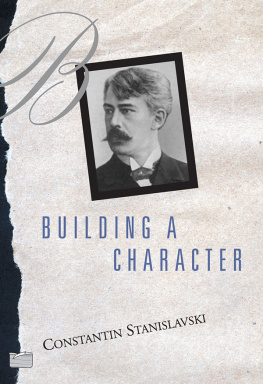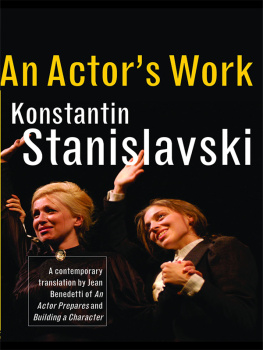Foreword
by Robert Lewis
HERE, almost a quarter of a century after his death, are some more nuggets dug up from the vast gold mine of Stanislavski's continuous search for a truthful and artistic method of training actors and working on roles. So rich is the substance of Creating a Role, so provocative, that one feels it is possible to take many of the ideas presented and expand them into essays or books.
The first of the three parts of this book is a particularly brilliant break-down of how to work on a part. It will confirm, or clarify, many points for those actors and directors who already work along these lines. For those who don't, this study of Stanislavski's approach to his role of Chatski in Woe From Wit will be a revelation. This section, without the device of the teacher-pupil dialogue used in the rest of the book, seems to me to be the most lucid presentation of Stanislavski's aims so far.
Here we have a logical break-down of the rehearsal period from the first reading on. Beginnings being so important, Stanislavski tells us why it is advisable for the play first to be read to the cast by one person. He shows us how to recount the story of a play in actors terms, how to analyze the play and the roles, being careful to distinguish between intellectual and artistic analysis. He teaches us how to create a logical subtext to create an inner life which will give substance to the author's words. The most important, and least understood, aspect of the work, the search into one's own experience to arouse feelings analogous to those required in the part, gets a thorough airing.
Don't think that feeling is all that is stressed here. Unlike some modern self-styled practitioners of what they call The Method (no such arrogance will be found in Stanislavski's own writings) there is more than lip-service paid to beauty of language, lightness of verse, rhythm, imagination, and all the the-atrical and artistic means of expression. Stanislavski was not unaware that although it is true that if your intention to not disturb those inside makes you knock on the door timidly, it is also true that a careful, delicate knock on the door creates a sense of timidity in you. He constantly stresses the choice of physical actions, a process he keeps intertwining with his internal actions as he works on a role. The question always asked in making the part true to himself is, What would I do if I were in so-and-so's [the character's] situation? Yes, always the character s situation: his life in his city in his time, and so forth; not my life in my city in my time, as we sometimes suspect modern methodists are thinking.
In with distinction everything from realistic plays to opera, and in every style. It cannot be said too often that Stanislavski's method is not a style and not applicable to one particular style of theatre, but is an attempt to find a logical approach to the training of actors for any play, and an artistic way of preparing for any role.
. But wc do have a chance to see Stanislavski trying his rehearsal procedure on two other roles: Othello, and Khlestakov in The Inspector General. Again he approaches these parts from the inside and the outside simultaneously. He discovers, in fact, that finding the correct physical truth of the part feeds his inner truth better, as he says, than forcing feeling. He pursues the character by his use of the justification of the physical acts of the part, by placing himself in the circumstances of the character through the celebrated magic if, and by breaking down the inner line of the part into logical objectives; in other words, an interior and exterior analysis of himself as a human being in the circumstances of the life of his role, his own feelings always chosen to be analogous to the feelings inherent in the part. This makes for the truthful playing of the life of the part in the play.
Of particular interest to directors, there is, in the appendix, a twenty-five point summing-up of a plan of rehearsal from the first reading to the final characterization. There are certain suggestions, such as asking the actors where they would like to be on the stage at given moments, that are the privileges of directors with permanent theatres. In show-business, that is to say, doing one isolated production at a time, with newly assembled actors, all from different backgrounds, with limited rehearsal time, the director may want to forget that indulgence!
All through the three sections of this book you get a picture of a real artist at work, sometimes failing, but without despair, and always seeking truthful answers. (He reworked his role of Satin in The Lower Depths after playing it eighteen years!) Admirers of An Actor Prepares and Building a Character will relish Creating a Role. Those being introduced to Stanislavski's writings with this book will want to examine the other two. A thorough study of all three books will reveal the all-important point of how to apply the technique studied in the classroom to the preparation of roles.
Here, then, is more word from the master, rather than from his disciples. It is a book for all theatre professionals as well as students. Whether you are in agreement or disagreement with all, or parts, of it, you cannot help being stimulated and enriched by it.
Translators Note
Creating a Role is the third volume of Stanislavski's planned trilogy on the training of an actor. The first two, An Actor Prepares and Building a Character, although published thirteen years apart, were intended to describe the young actor's regime at much the same period in his development: while training his inner qualities of emotion memory, imagination and concentration, he was also developing his physical means by rigorous work on his voice and body, the very instruments for putting into vivid and convincingly concrete form what the inner life might develop. Now, another twelve years later, we are able to issue the projected third volume. This phase in Stanislavski's teaching, which he believed an actor should come to after mastery of the other two, is the preparation of specific roles, beginning with the first reading of a play and the development of the first scene. The English title is as close as possible to the rather longer Russian one, literally


